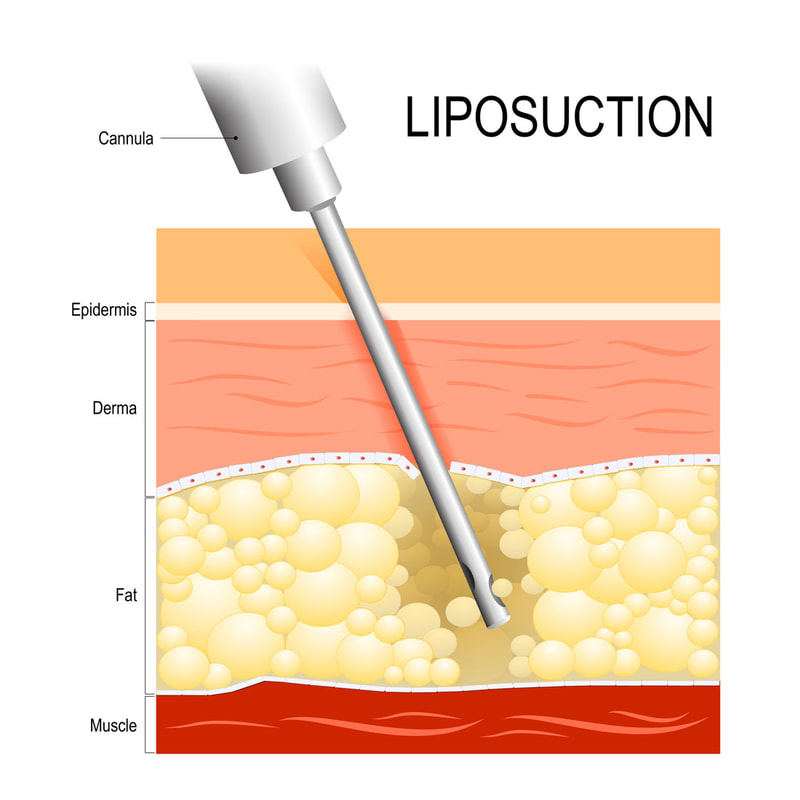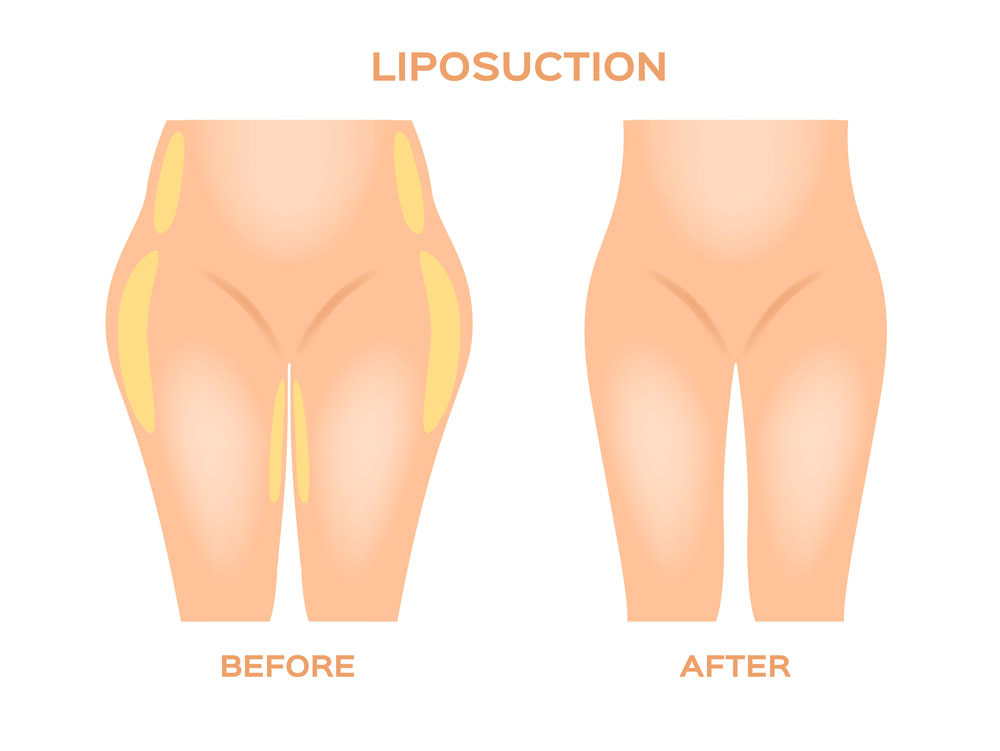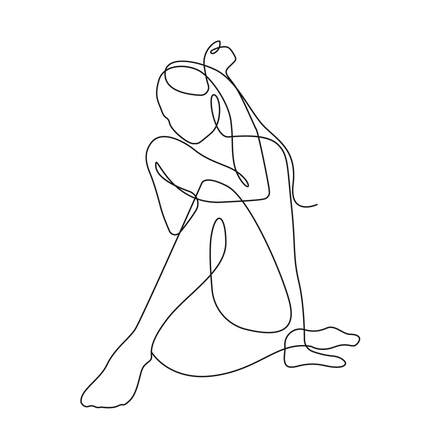Dr Lewis Blennerhassett Specialist Plastic Surgeon
|
Liposuction is one of the most common cosmetic procedures performed around the world. The technique involves removal of localised areas of fat from the body via small inconspicuous incisions with the use of a cannula, which is connected to a negative pressure device. This technique is able to remove fatty tissue whilst preserving the architecture of the skin and other important structures such as nerves and blood vessels.
The scarring is fairly minimal as it is usually possible to locate incisions in an inconspicuous area. In most cases, liposuction is done under a general anaesthesia for patient comfort purposes, although small areas can be done under local anaesthetic. For small areas of liposuction, it is often possible to be discharged from hospital the same day. However, for larger areas it is usually wise to remain in hospital overnight so that fluids can be monitored and adequate pain relief can be given. The patients who benefit most from liposuction procedures are those who have well-localised areas of excess fatty tissue that do not change significantly with weight loss. Examples are:
|
It is not a technique that is useful in cases where there is excess skin (such as in patients who have lost large amounts of weight or when the excess fatty tissue is associated with a large amount of excess skin) since removal of the fat in these cases tends to makes the excess skin appearance worse.
It is also important to note that this technique is not a weight-loss tool. It is purely a technique used to remove specific localised areas of fatty tissue.
It is also important to note that this technique is not a weight-loss tool. It is purely a technique used to remove specific localised areas of fatty tissue.
Liposuction Recovery
There will be some temporary bruising for approximately 2 weeks and some residual swelling in the area treated for approximately 2-4 months, depending on the age of the patient and the area that was treated.
All dressings changes are carried out by our highly experienced nurses.
During the recovery period, Dr Blennerhassett will be contactable to answer your questions. His mobile number will be provided to you during pre-surgery consultations.
This is general advice for general education and information purposes only. Dr Blennerhassett will discuss your individual expectations, risks and recovery management with you.
Liposuction with Dr Lewis Blennerhassett - Specialist Plastic Surgeon Perth
Skilled in liposuction, Dr Lewis Blennerhassett is a respected and highly trained Specialist Plastic Surgeon. He has performed this procedure for more than 20 years.
His work is focused on being meticulous and precise – prioritising safety and standards. His liposuction in Perth is performed only in fully accredited, fully equipped Perth hospitals. His anaesthetists are highly qualified, experienced and skilled.
Liposuction offered by Dr Blennerhassett is highly individualised and based on your needs. After a comprehensive and thorough discussion with you, he will personally work with you on your procedure plan.
A great communicator, he oversees all patient care, from the first consultation until full recovery.
*Dr Lewis Blennerhassett (MED0001532372), registered medical practitioner
Specialist Plastic Surgeon, Specialist registration in Surgery – Plastic Surgery
For appointment bookings - Please phone Tara, Domenica or Paula on 08 9381 6977
Liposuction Risks
From the Australian Society of Plastic Surgeons (https://plasticsurgery.org.au/)
Modern surgery is generally safe but does have the potential for risks and complications to occur, states the Australian Society of Plastic Surgeons.
The risks of liposuction increase if a large number of body areas are treated at the same time or if the areas operated on are large in size.
Some of the possible complications and risks associated with liposuction may include:
Referral Needed
You will now need to first obtain a referral for cosmetic surgery from your GP. We will also get you to complete a screening questionnaire. The changes are new rulings from the Medical Board and AHPRA. They are being introduced across Australia to further support high quality care.
Cosmetic surgery is a serious decision, needing planning and consideration.
If you have any questions or need any assistance with these changes, our lovely staff members are ready on standby to help out. Pls phone Tara, Domenica or Paula on 08 93816977.
There will be some temporary bruising for approximately 2 weeks and some residual swelling in the area treated for approximately 2-4 months, depending on the age of the patient and the area that was treated.
All dressings changes are carried out by our highly experienced nurses.
During the recovery period, Dr Blennerhassett will be contactable to answer your questions. His mobile number will be provided to you during pre-surgery consultations.
This is general advice for general education and information purposes only. Dr Blennerhassett will discuss your individual expectations, risks and recovery management with you.
Liposuction with Dr Lewis Blennerhassett - Specialist Plastic Surgeon Perth
Skilled in liposuction, Dr Lewis Blennerhassett is a respected and highly trained Specialist Plastic Surgeon. He has performed this procedure for more than 20 years.
His work is focused on being meticulous and precise – prioritising safety and standards. His liposuction in Perth is performed only in fully accredited, fully equipped Perth hospitals. His anaesthetists are highly qualified, experienced and skilled.
Liposuction offered by Dr Blennerhassett is highly individualised and based on your needs. After a comprehensive and thorough discussion with you, he will personally work with you on your procedure plan.
A great communicator, he oversees all patient care, from the first consultation until full recovery.
*Dr Lewis Blennerhassett (MED0001532372), registered medical practitioner
Specialist Plastic Surgeon, Specialist registration in Surgery – Plastic Surgery
For appointment bookings - Please phone Tara, Domenica or Paula on 08 9381 6977
Liposuction Risks
From the Australian Society of Plastic Surgeons (https://plasticsurgery.org.au/)
Modern surgery is generally safe but does have the potential for risks and complications to occur, states the Australian Society of Plastic Surgeons.
The risks of liposuction increase if a large number of body areas are treated at the same time or if the areas operated on are large in size.
Some of the possible complications and risks associated with liposuction may include:
- Thermal burn or other heat injury to the skin or deeper tissues from the ultrasound device that is used to liquefy fat cells. This can occur in ultrasound-assisted liposuction
- Complications caused by the injection of anaesthetic fluid can include lignocaine toxicity (if the solution’s lignocaine content is too high) or collection of fluid in the lungs (if too much fluid is given). This can occur in tumescent and super-wet liposuction
- Excessive fluid loss, which can lead to shock
- Fluid accumulation
- Infection that develop in fatty tissues. This can be a serious complication and can be difficult to treat
- Delayed healing
- Friction burns or other damage to the skin or nerves
- Irregular skin surface, uneven contours or rippling
- Asymmetric or ‘baggy’ skin surface
- Change in skin sensation or numbness
- Skin pigmentation changes, skin discolouration or swelling
- Unacceptable scarring
- Damage to deeper structures such as nerves, blood vessels, muscles, lungs and abdominal organs
- Pain, which may be ongoing
- Allergic drug reactions
- Formation of blood clots or fat clots, which may migrate to the lungs
- Persistent swelling in the legs
- Deep vein thrombosis, cardiac and pulmonary complications
- Further surgery may be necessary to address complications
- Dr Blennerhassett will discuss your individual expectations, risks and recovery management in person.
Referral Needed
You will now need to first obtain a referral for cosmetic surgery from your GP. We will also get you to complete a screening questionnaire. The changes are new rulings from the Medical Board and AHPRA. They are being introduced across Australia to further support high quality care.
Cosmetic surgery is a serious decision, needing planning and consideration.
If you have any questions or need any assistance with these changes, our lovely staff members are ready on standby to help out. Pls phone Tara, Domenica or Paula on 08 93816977.



